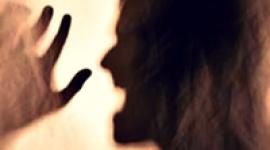What Is Delusional Disorder?

Full description of Delusional Disorder. Definition, signs, symptoms, causes of Delusional Disorder.
Description of Delusional Disorder
Delusional disorder is classified as a psychotic disorder, a disorder where a person has trouble recognizing reality. Delusional disorder generally first affects people in middle or late adult life. Delusions tend to be nonbizarre and involve situations that could conceivably occur in real life, such as being followed, poisoned, infected, loved at a distance, or deceived by a spouse or lover. Several subtypes of delusional disorder are recognized and listed below.
Diagnostic Criteria for Delusional Disorder
- Nonbizarre delusions for at least one month
- Absence of obviously odd or bizarre behavior
- Schizoaffective Disorder and Mood Disorder with Psychotic Features have been ruled out
- Absence of evidence that an organic factor initiated and maintained this psychotic disturbance
- Absence of prominent hallucinations of a voice for at least one week. Absence of visual hallucinations for at least one week
- Has never met the criteria for the active phase of Schizophrenia
Subtypes of Delusional Disorder
- Erotomanic Type: Predominately erotomanic delusions. Patient believes that another person is in love with the individual. Efforts to contact the object of the delusion through telephone calls, letters, or even surveillance and stalking may be common.
- Grandiose Type: Predominately grandiose delusions. Patient believes that he has a special identity, knowledge, power, self-worth, talent or relationship to someone famous or to God.
- Jealous Type: Predominately delusions of jealousy. Patient believes his or her partner or lover has been unfaithful. This belief is based on incorrect inferences supported by dubious "evidence." Under such circumstances, physical assault may be a significant danger
- Persecutory Type: Predominately persecutory delusions. Patient believes he is being cheated, drugged, followed, plotted against, slandered or somehow mistreated. The person may repeatedly attempt to obtain justice by appealing to courts and other government agencies. Rarely, violence may be resorted to in retaliation for imagined persecution.
- Somatic Type: Predominately somatic delusions. Patient believes he is experiencing physical sensations or bodily dysfunctions such as foul odors or insects crawling on or under the skin or is suffering from a general medical condition or physical defect.
- Unspecified Type: Doesn't fit any of the previous categories.
For comprehensive information on delusions and psychosis, visit the HealthyPlace.com Thought Disorders Community.
Sources: 1. American Psychiatric Association. (1994). Diagnostic and Statistical Manual of Mental Disorders, Fourth Edition. Washington, DC: American Psychiatric Association. 2. Merck Manual, Home Edition for Patients and Caregivers, last revised 2006.
APA Reference
Staff, H.
(2019, October 28). What Is Delusional Disorder?, HealthyPlace. Retrieved
on 2026, January 12 from https://www.healthyplace.com/other-info/psychiatric-disorder-definitions/delusional-disorder



